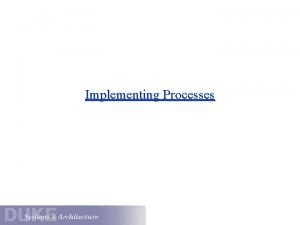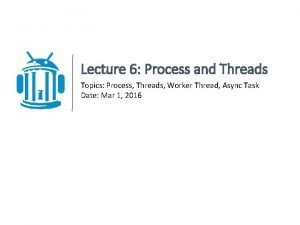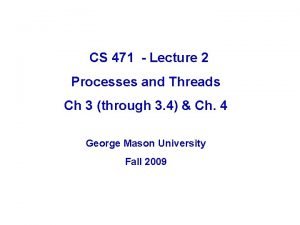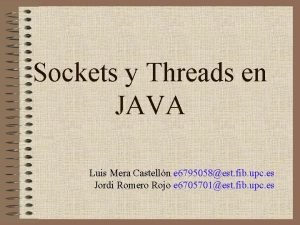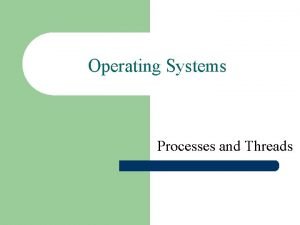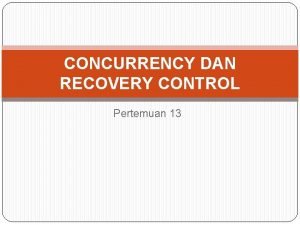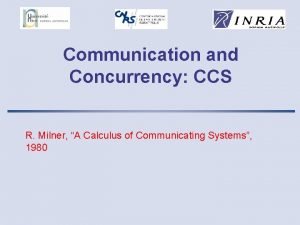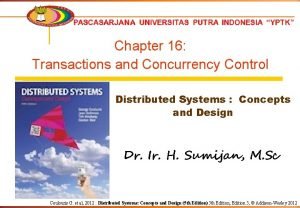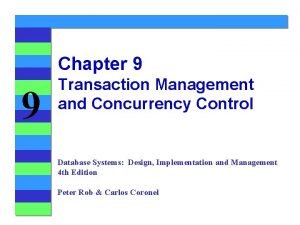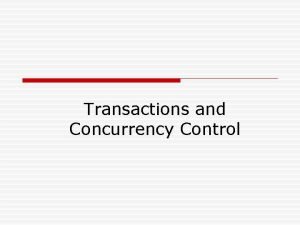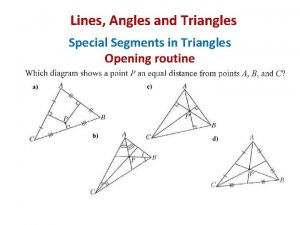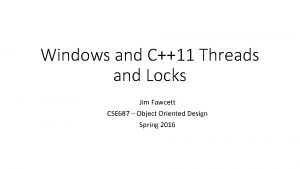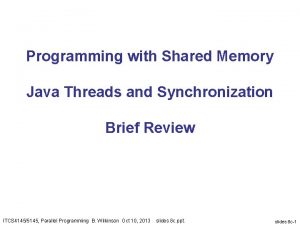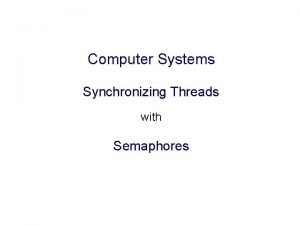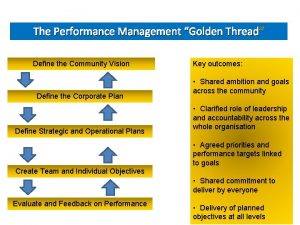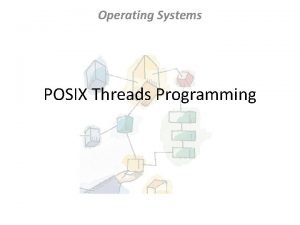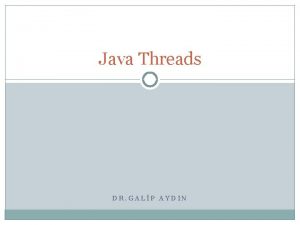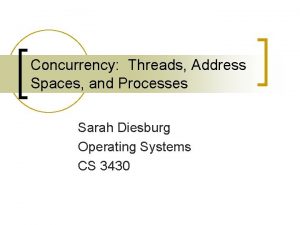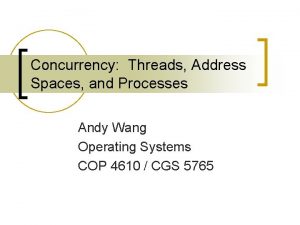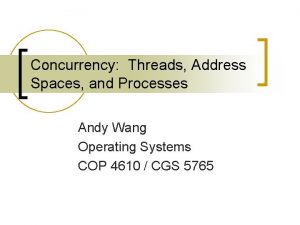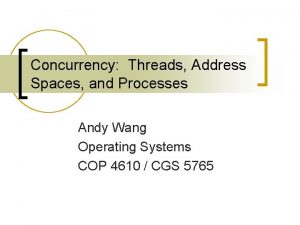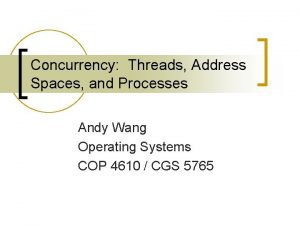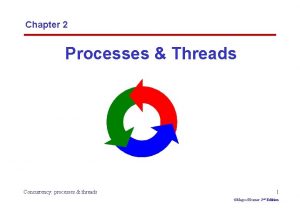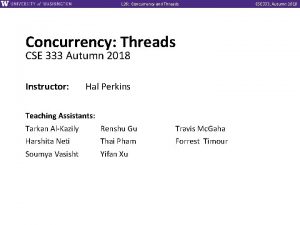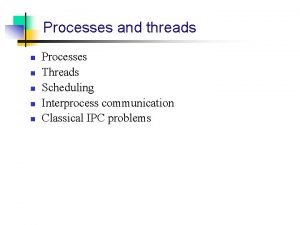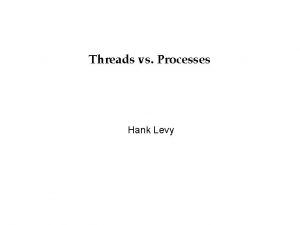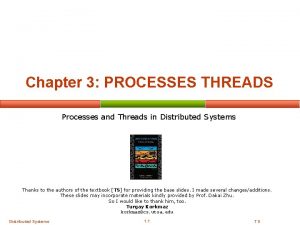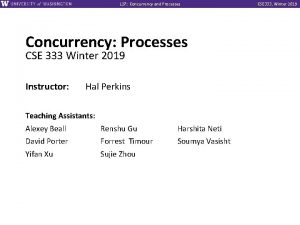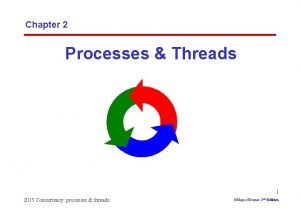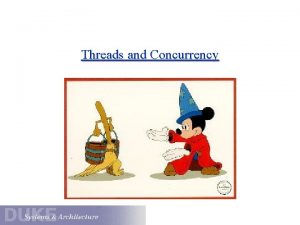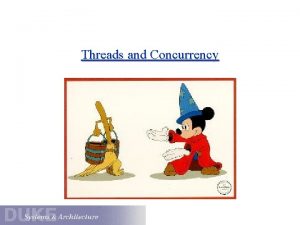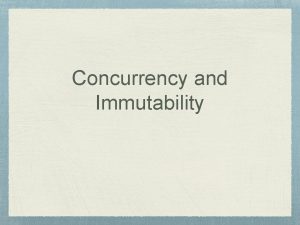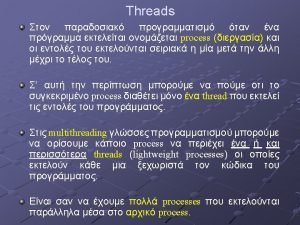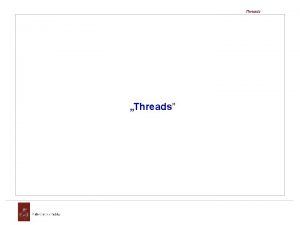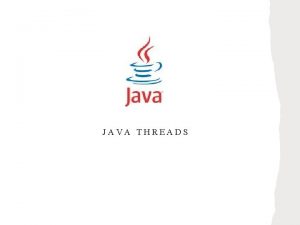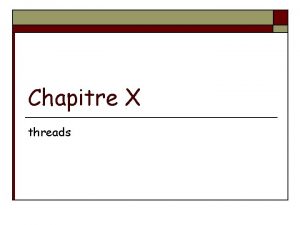Concurrency Threads Address Spaces and Processes Mark Stanovich






























- Slides: 30

Concurrency: Threads, Address Spaces, and Processes Mark Stanovich Operating Systems COP 4610

Why Concurrency? Allows multiple applications to run at the same time Analogy: juggling

Benefits of Concurrency

Benefits of Concurrency Ability to run multiple applications at the same time Better resource utilization Resources unused by one application can be used by the others Better average response time No need to wait for other applications to complete

Benefits of Concurrency Better performance One application uses only the processor One application uses only the disk drive Completion time is shorter when running both concurrently than consecutively

Drawbacks of Concurrency

Drawbacks of Concurrency Applications need to be protected from one another Additional coordination mechanisms among applications Overhead to switch among applications Potential performance degradation when running too many applications

Thread A sequential execution stream The smallest CPU scheduling unit Can be programmed as if it owns the entire CPU Implication: an infinite loop within a thread won’t halt the system Illusion of multiple CPUs on a single machine

Thread States Program counter Register values Execution stacks

Thread Benefits Simplified programming model per thread Example: Microsoft Word One thread for grammar check; one thread for spelling check; one thread formatting; and so on… Can be programmed independently Simplifies the development of large applications

Address Space Contains all states necessary to run a program Code, data, stack(s) Program counter(s) Register values Resources required by the program Status of the running program

Process An address space + at least one thread of execution Address space offers protection among processes Threads offer concurrency A fundamental unit of computation

Process =? Program: a collection of statements in C or any programming languages Process: a running instance of the program, with additional states and system resources

Process >? Program Two processes can run the same program The code segment of two processes are the same program

Program >? Process A program can create multiple processes Example: gcc, netscape

Analogy Program: a recipe Process: everything needed to cook e. g. , kitchen Two chefs can cook the same recipe in different kitchens One complex recipe can involve several chefs

Some Definitions Uniprogramming: running one process at a time Multiprogramming: running multiple processes on a machine

Some Definitions Multithreading: having multiple threads per address space Multiprocessing: running programs on a machine with multiple processors Multitasking: a single user can run multiple processes

Classifications of OSes Single address Multiple space address spaces Single thread MS DOS, Macintosh Traditional UNIX Multiple threads Embedded systems Windows NT, Solaris, OS/2

Threads & Dispatching Loop A thread owns a thread control block Execution states of the thread The status of the thread Running or sleeping Scheduling information of the thread e. g. , priority

Dispatching Loop Threads are run from a dispatching loop LOOP Context switch Jump to the first instruction Run thread Save states Scheduling Choose a new thread to run Load states from a different thread

Simple? Not quite… How does the dispatcher regain control after a thread starts running? What states should a thread save? How does the dispatcher choose the next thread?

How does the dispatcher regain control? Two ways: 1. Internal events (“Sleeping Beauty”) 2. A thread is waiting for I/O A thread is waiting for some other thread Yield—a thread gives up CPU voluntarily External events Interrupts—a complete disk request Timer—it’s like an alarm clock

What states should a thread save? Anything that the next thread may trash before a context switch Program counter Registers Changes in execution stack

How does the dispatcher choose the next thread? The dispatcher keeps a list of threads that are ready to run If no threads are ready Dispatcher just loops If one thread is ready Easy

How does the dispatcher choose the next thread? If more than one thread are ready We choose the next thread based on the scheduling policies Examples FIFO (first in, first out) LIFO (last in, first out) Priority-based policies

How does the dispatcher choose the next thread? Additional control by the dispatcher on how to share the CPU Examples: Run to completion A B C Timeshare the CPU A B C A C Time

Per-thread States Each thread can be in one of the three states 1. 2. 3. Running: has the CPU Blocked: waiting for I/O or another thread Ready to run: on the ready list, waiting for the CPU

Per-thread State Diagram Running Scheduled Ready I/O request Yield, timer I/O complete Blocked

Program and Process text data Source Code int main() { … } heap free space stack
 Process vs thread
Process vs thread Threads vs processes
Threads vs processes Concurrent in os
Concurrent in os Logical memory vs physical memory
Logical memory vs physical memory Process and threads
Process and threads Process and threads
Process and threads Sockets and threads
Sockets and threads Slidetodoc.com
Slidetodoc.com Pessimistic concurrency control
Pessimistic concurrency control Concurrency control adalah
Concurrency control adalah Communication and concurrency
Communication and concurrency Safety and liveness in concurrency
Safety and liveness in concurrency Transactions and concurrency control in distributed systems
Transactions and concurrency control in distributed systems Transaction management in dbms
Transaction management in dbms Advantages of two phase locking protocol in dbms
Advantages of two phase locking protocol in dbms Special lines in triangles
Special lines in triangles Transaction management and concurrency control
Transaction management and concurrency control C11 thread
C11 thread Shared memory in java
Shared memory in java Assembly drawing
Assembly drawing Flexible flat material made by interlacing yarns
Flexible flat material made by interlacing yarns Escalonamento de threads
Escalonamento de threads Os threads
Os threads Vinaya pitaka is a sacred text of
Vinaya pitaka is a sacred text of Needle like threads of spongy bone
Needle like threads of spongy bone Heavy duty cutting of fabric
Heavy duty cutting of fabric Golden thread model
Golden thread model Pintos priority donation
Pintos priority donation Pthreads
Pthreads Threads java
Threads java Alternanthera red threads
Alternanthera red threads

